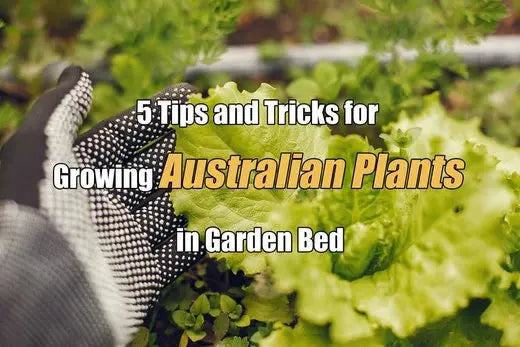A Guide to Growing Root Vegetables in Metal Raised Beds
Some gardeners can vouch that using metal raised beds to grow your root vegetables helps them grow faster and lusher. This is because raised beds provide better control over soil quality, drainage, and pest prevention.In this comprehensive guide, we'll show you how to grow root vegetables in metal raised beds. At the end of this read, you will know the steps and best practices for growing healthy and refreshing vegetables.

The Benefits of Growing Root Vegetables in Metal-Raised Beds
Here are the benefits of using metal-raised beds
- Improved Soil Quality: You have complete control over the soil in your raised beds. This means you can tailor it to the specific needs of root vegetables.
- Better Drainage: Metal-raised beds generally have excellent drainage properties. Excess water can drain away more efficiently, reducing the risk of waterlogged soil, which can harm root vegetables.
- Pest Prevention: The elevated nature of raised beds can deter pests like ground-dwelling rodents and some insects. This minimizes the risk of your root vegetables falling victim to nasty critters.
- Extended Growing Season: Raised beds tend to warm up faster in the spring, allowing you to start planting earlier. Additionally, they stay warmer later into the fall, potentially extending your harvest season.
Essential Steps to Grow Root Vegetables in Metal Raised Beds Successfully
Here are direct steps to growing your veggies with metal raised garden beds.
Step 1: Choose the Right Location
Most root vegetables need sunlight, which means they need at least six hours of direct sunlight each day. If your garden space doesn't receive this much sunlight, consider growing varieties that are more tolerant of partial shade.
Also, make sure the site is level and well-drained to prevent waterlogging. You can use a simple level tool or smartphone apps like iHandy Level, Clinometer, or Thoedolite to determine the slope and make necessary adjustments to maintain even soil conditions.
Step 2: Select the Appropriate Root Vegetable Varieties
When it comes to choosing the root vegetables for your metal-raised garden bed, you have plenty of options like carrots, beets, radishes, turnips, and parsnips but consider these factors too:
- Climate: Some root vegetables are better suited to specific climate conditions. For example, carrots and parsnips are excellent in cooler climates, while sweet potatoes thrive in warmer regions.
- Space Requirements: Different varieties need varying amounts of space to grow. Always confirm if your raised bed can accommodate the type of root veggies you’re planting. You can do this by employing a "Raised Bed Size Calculator." This tool could help gardeners determine the optimal size and dimensions for their metal raised beds based on the available space in square footage.
- Soil Depth: The depth of your raised bed is essential. Carrots, for instance, need deeper soil for their long taproots, while radishes can grow well in shallower beds. This is why you should be careful to pick the right metal raised bed size for a vegetable.
Better still, you can purchase a 9-in-1 metal raised bed bulk with varying sizes for all your gardening needs.
Step 3: Prepare the Soil
Here's how to prepare the soil for growing root vegetables:
- Remove Weeds: Before adding new soil, make sure the bed is free from weeds and debris. This will prevent competition for nutrients and reduce the risk of pests.
- Add Organic Matter: Enhance the soil by incorporating organic matter like compost or well-rotted manure. This improves soil structure, fertility, and moisture retention.
- Check pH Levels: Most root vegetables prefer a slightly acidic to neutral soil pH. Test your soil and adjust the pH if necessary by adding lime to raise it or sulfur to lower it.
Also read: How to improve soil pH in raised beds?
Step 4: Planting Your Root Vegetables
Each root vegetable variety has specific planting requirements, but here are some general tips:
- Planting Depth: Follow the guidelines for your chosen vegetables. For instance, carrots and parsnips should be planted at around 1/4 to 1/2 inch deep, while beets can go slightly deeper at 1 inch.
- Spacing: Adequate spacing between seeds or seedlings is crucial. Overcrowding can lead to competition for nutrients and smaller harvests. Consult seed packets or plant labels for recommended spacing.
- Sow Seeds: If you're planting from seeds, create shallow furrows for your root vegetables and sow the seeds according to your chosen variety's requirements.
Step 5: Watering and Maintenance
Proper watering and maintenance are vital for root vegetable success, but most oftentimes, we water our beds wrongly, here’s what you should do.
- Consistent Moisture: Root vegetables need consistent moisture to prevent them from becoming tough or developing cracks. Ensure your metal raised bed receives adequate water, especially during dry periods.
- Mulching: Applying mulch around your root vegetables helps retain moisture, suppress weeds, and maintain even soil temperature. Use organic mulch materials like straw or compost.
- Thinning: Once your root vegetable seedlings emerge, thin them to the recommended spacing. Crowded plants will not grow to their full potential.
Step 6: Protect Your Crop
To safeguard your root vegetables from potential threats in the metal raised garden beds, consider these protective measures:
- Pest Control: Regularly inspect your plants for signs of pests. Use organic pest control methods, such as neem oil or diatomaceous earth, to deter common root vegetable pests like aphids, caterpillars, and nematodes.
- Bird Netting: Birds can be a nuisance, particularly if they discover your ripening root vegetables. Cover your metal raised bed with bird netting or use scare tactics like reflective tape.
- Cold Weather Protection: If you aim to extend the growing season into late fall or early winter, be prepared to protect your plants from frost. Row covers or cold frames can help keep your crops warm.
Step 7: Step 7: Harvesting

The timing for harvesting root vegetables depends on the variety and your desired size. Here's a general guideline for some common root vegetables:
- Carrots: Typically, you can start harvesting carrots when they reach about 1/2 inch in diameter. However, you can leave them in the ground for a more extended period if desired.
- Beets: Beets can be harvested when they're approximately 1 to 3 inches in diameter. Young beets are more tender and sweet.
- Radishes: These grow quickly and are often ready for harvest within three to four weeks from planting.
- Parsnips: Parsnips improve in flavor after exposure to frost. Harvest them when they reach the desired size, usually between 1 to 2 inches in diameter.
Step 8: Crop Rotation
Crop rotation is a vital practice in maintaining soil health and preventing disease. Avoid planting root vegetables in the same metal raised bed year after year. Rotate them with other plant families to break pest and disease cycles.
Conclusion
Knowing the best metal raised-bed type suitable for a vegetable is similar to knowing the suitable seasonal sod type for your lawn. With the right choice of vegetables, proper soil preparation, and ongoing care, you can enjoy a bountiful harvest of crisp, flavorful, and nutritious root vegetables. Whether you're a seasoned gardener or a novice, cultivating root vegetables in metal-raised is a reliable method to grow healthy vegetables.
Pick A Metal Raised Bed
By Chuks Wesley
Author Bio: Chuks Wesley is a seasoned gardening expert and Saas B2B content writer. With a deep-rooted passion for gardening, landscapes, and lawn care, Wesley has cultivated a wealth of knowledge in gardening. His experience and expertise extend beyond the garden bed, as he seamlessly crafts insightful content tailored to the software-as-a-service (SaaS) B2B industry. His go-to fun mode is watching NBA games with coffee in hand.


